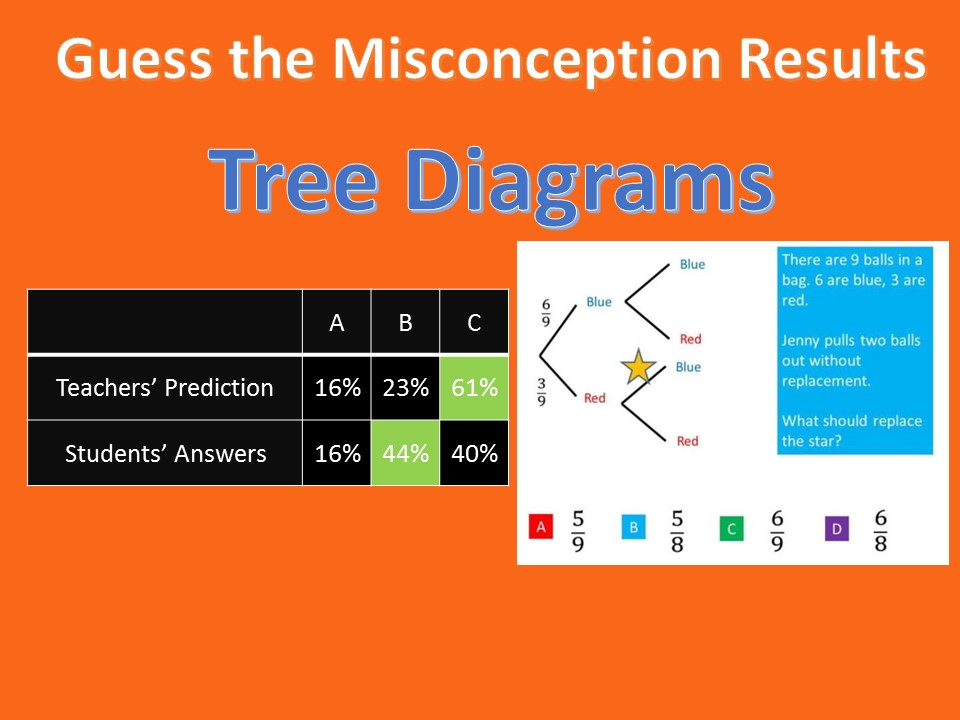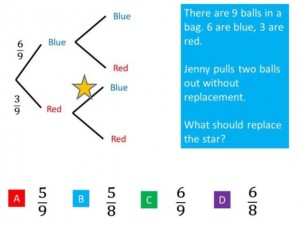It is a very exciting week in the world of Guess the Misconception (for me, anyway!). Because, after a very impressive run, I am afraid to say that the teachers have incorrectly predicted the most common student misconception to the following question on tree diagrams:
As can be seen from the results, teachers overwhelmingly believed the most common misconception would be C), whereas in fact option B) stole the crown. What dastardly misconception does answer B) reveal, and what can we learn from it? Well, let’s look at the student explanations to find out:
“when one ball is taken is leaves 8 then leaves 5 blue balls after taking one blue ball”
“because there is 8 in total and when the take a blue ball out there would be 5 left”
“6 balls to start with 1 is taken away theres only 5 left out of all the balls”
So, this is not a misconception of failing to understand “without replacement”, it is a failure to follow the correct path of the tree diagram.
Sure enough, option C) was still incredibly popular with students, and from their explanations we can surmise that this may be due to the majority of questions at GCSE involving independent events where they can simply reproduce the fractions from the first branch. These explanations make that crustal clear:
“The blue probability is always equal to 6 divided by 9.”
“because the number of blue balls has not changed”
“Red continues to be 3/9 and the rest is 6/9”
So, the lesson my maths department and I are taking from this is to not underestimate the complexity of tree diagrams without replacement. Previously I felt it was enough to ensure students had spotted that all-important phrase, and hence would avoid the kind of mistake Option C) reveals. However, it is apparent from this question that simply assuming that students will then be able to successfully answer the question is misplaced confidence. Students must be able to correctly interpret the significance of each branch, the scenario it tells, and hence deduce the resulting probability. Otherwise, they will be dropping valuable marks in their GCSE exam.

